Air Minicabs: The Future of Air Travel
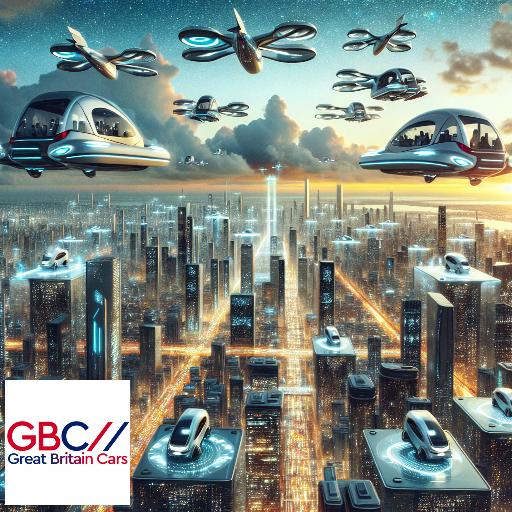
Air transfers: The Future of Air Travel
Air transfers are set to revolutionize the future of air travel. These compact, autonomous flying vehicles are designed to transport individuals or small groups, offering a personalized and efficient travel experience. The concept of Air transfers is a significant leap towards reducing traffic congestion and pollution, as they operate on clean energy and utilize airspace, thus freeing up road networks. The technology behind Air transfers is a blend of drone and helicopter features, enabling vertical take-off and landing, and the ability to navigate complex urban landscapes. With the integration of AI and advanced navigation systems, these transfers promise safe and reliable transportation. Air transfers are not just a concept anymore; several companies are already testing prototypes, with some even planning commercial launches in the next few years. As regulatory frameworks evolve to accommodate this new mode of transport, Air transfers are poised to become a common sight in our skies, heralding a new era in air travel.
Regulations and Safety Concerns
The future of air travel is set to be revolutionized by the introduction of air transfers. However, this innovative concept brings with it a host of regulations and safety concerns that need to be addressed. The primary concern is passenger safety. Air transfers will need to meet stringent safety standards, similar to those applied to traditional aircraft. These include rigorous testing of the vehicle's airworthiness, emergency procedures, and pilot training. Regulatory bodies will also need to establish rules for air traffic control to prevent mid-air collisions. Noise pollution is another concern that needs to be regulated to ensure minimal disturbance to urban areas. Furthermore, the environmental impact of air transfers must be considered, with regulations put in place to limit emissions. While air transfers promise a new era of convenient and fast travel, it is crucial that these safety and regulatory concerns are addressed to ensure a safe and sustainable future for air travel.
Technological Advancements
Technological advancements are revolutionizing the future of air travel, with air transfers at the forefront of this transformation. These compact, autonomous flying vehicles are designed to transport passengers over short distances, bypassing congested city roads. The integration of AI technology ensures safe navigation and efficient traffic management in the skies. Moreover, the use of electric propulsion systems in these air transfers contributes to a greener and more sustainable mode of transportation, reducing carbon emissions significantly. Companies like Uber and Airbus are investing heavily in this technology, envisioning a future where air transfers are as common as transfers. The development of vertiports, vertical take-off and landing (VTOL) infrastructure, is also a crucial aspect of this new era of air travel. These advancements are not only expected to revolutionize commuting but also have the potential to reshape urban landscapes. In conclusion, the future of air travel is on the cusp of a major shift, with air transfers leading the way towards a more efficient, sustainable, and congestion-free transportation system.
Environmental Impact
The future of air travel is set to undergo a significant transformation with the advent of air transfers. These innovative vehicles, designed to ferry passengers across cities through the air, promise to revolutionize urban mobility. However, their environmental impact is a critical aspect that needs careful consideration. Unlike traditional air travel, air transfers are expected to be electric, which means they could significantly reduce carbon emissions associated with transportation. However, the energy required to charge these vehicles and the potential increase in air traffic could pose new environmental challenges. The production of batteries for these vehicles also has an environmental cost. Therefore, while air transfers hold the potential to reduce our carbon footprint, it is essential to develop sustainable charging infrastructure and battery recycling methods. The future of air travel with air transfers is promising, but it must be approached responsibly to ensure it contributes positively to our environment.
Economic Implications
The future of air travel is set to be revolutionized by the advent of air transfers. These autonomous flying vehicles, capable of transporting passengers across cities, promise to alleviate congestion and reduce travel times significantly. However, their economic implications are vast and varied. On one hand, air transfers could stimulate economic growth by creating new jobs in manufacturing, maintenance, and air traffic control. They could also boost tourism by making travel more accessible and convenient. On the other hand, they could disrupt traditional transfer and public transport industries, leading to job losses. Moreover, the cost of implementing the necessary infrastructure and regulations could be substantial. The environmental impact is another economic consideration, as the energy consumption and emissions of these vehicles could have significant costs. Therefore, while air transfers hold great potential, their economic implications need to be carefully considered and managed to ensure a sustainable and equitable future for air travel.
Infrastructure Requirements
The future of air travel is set to be revolutionized by the advent of air transfers. However, this innovative mode of transport requires a robust infrastructure to ensure safety, efficiency, and sustainability. Key requirements include designated take-off and landing zones, which must be strategically located to minimize noise pollution and ensure accessibility. These zones should also be equipped with advanced navigation systems for precise and safe operations. Moreover, the infrastructure must support electric charging facilities, as most air transfers are expected to be electrically powered to reduce carbon emissions. Maintenance facilities are also crucial to ensure the air transfers are always in optimal condition. Furthermore, a comprehensive air traffic management system is necessary to coordinate the high volume of air transfers and prevent mid-air collisions. This system should be capable of real-time tracking and automated responses to emergencies. In conclusion, the successful implementation of air transfers hinges on the development of a comprehensive and technologically advanced infrastructure.
Public Perception and Acceptance
The future of air travel is set to be revolutionized with the introduction of air transfers. This innovative concept, which involves small, autonomous aircraft providing a transfer-like service, is gaining traction globally. However, public perception and acceptance are crucial for its successful implementation. The idea of air transfers is exciting, promising a solution to traffic congestion and a faster, more efficient mode of transport. However, it also raises concerns about safety, noise, and privacy. The public's acceptance will largely depend on how these issues are addressed. Companies pioneering this technology are investing heavily in safety measures and noise reduction technologies. They are also engaging with communities to understand their concerns and expectations. The potential benefits of air transfers are immense, from reducing travel time to decreasing carbon emissions. However, their success hinges on public acceptance. As we move towards this new era of air travel, it is essential to foster a positive public perception and ensure that air transfers are not just a futuristic concept, but a practical, accepted, and embraced mode of transport.
Potential Challenges
The concept of air transfers is revolutionizing the future of air travel. However, it is not without potential challenges. The primary concern is safety. Ensuring the safety of passengers and other aircraft in the crowded airspace is paramount. This requires advanced technology and stringent regulations. Another challenge is infrastructure. Existing airports may not be equipped to handle the influx of air transfers. New landing pads and air traffic control systems may need to be developed. Noise pollution is another issue. Air transfers need to be quiet enough to operate in urban areas without disturbing residents. Lastly, there's the challenge of public acceptance. People may be hesitant to embrace this new mode of transportation due to safety concerns or simply resistance to change. Despite these challenges, the potential benefits of air transfers, such as reduced traffic congestion and faster travel times, make them an exciting prospect for the future of air travel.
Key Players in the Industry
The future of air travel is set to be revolutionized by the advent of air transfers. Key players in this emerging industry are making significant strides in developing this innovative mode of transport. Uber Elevate, a division of the ride-hailing giant, is leading the charge with its ambitious plan to launch flying transfers by 2023. Another major player is Airbus, which has already tested its autonomous air transfer, Vahana. Meanwhile, Volocopter, a German start-up, has successfully conducted test flights of its electric air transfer in several cities. Bell Helicopter is also in the race, unveiling its air transfer prototype, Nexus, at the 2019 Consumer Electronics Show. These industry leaders are not only shaping the future of air travel but also addressing major urban mobility challenges. However, they must overcome significant regulatory and infrastructure hurdles before air transfers become a reality.
Future Prospects
The future of air travel is set to be revolutionized with the advent of air transfers. These autonomous flying vehicles, capable of transporting passengers from one location to another, are expected to redefine urban mobility. The concept, which was once a part of science fiction, is now becoming a reality with several companies investing heavily in research and development. Air transfers are expected to offer a solution to the growing problem of traffic congestion in major cities around the world. They will provide a faster, more efficient mode of transport, reducing travel time significantly. Moreover, they are likely to be powered by electricity, making them an environmentally friendly alternative to traditional modes of transport. However, there are several challenges to overcome before air transfers become a common sight. These include regulatory hurdles, safety concerns, and the need for infrastructure such as landing pads. Despite these challenges, the future prospects for air transfers are promising, and they are set to transform the future of air travel.
Our Latest Blog Posts

Luxury on a Budget: Affordable Luxury Airport Minicabs
Blog about Luxury on a Budget: Affordable Luxury Airport Transfers
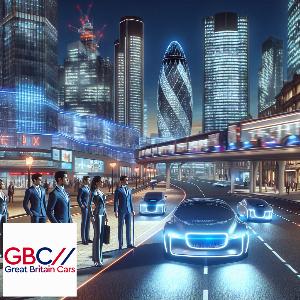
Business Travelers: Simplifying Your Journey to Londons Airports
Blog about Business Travelers: Simplifying Your Journey to Londons Airports

Stansted to the Gateway of the Fens: Elys Cathedral City
Blog about Stansted to the Gateway of the Fens: Elys Cathedral City
Blogs Pages
Heathrow to the Gardens of Kent: Natures Delights
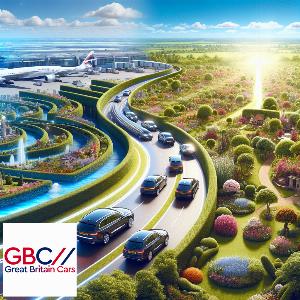
Blog about Heathrow to the Gardens of Kent: Natures Delights...
London Areas: Potential Hotspots for Air Minicabs
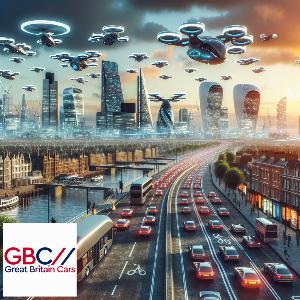
Blog about London Areas: Potential Hotspots for Air transfers...
The Evolution from Air Minicabs to Air Minicabs

Blog about The Evolution from Air transfers to Air transfers...
Heathrow to the Jurassic Coast: A Prehistoric Adventure
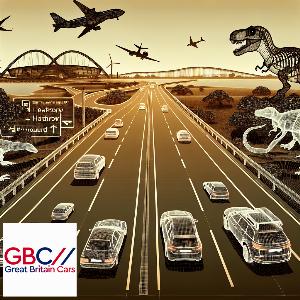
Blog about Heathrow to the Jurassic Coast: A Prehistoric Adventure...
Our Clients Testimonials

Professionalism
Very professional and trustful drivers they have . We will use this again.
Olivia





Best rates
They are also economically best as well. They have very reason able rates.
Mark





Best specialist co-op
They are best specialist co-op. They helped me a great deal in my manner.
William





Excellent cab service
I am really inspired by this Great Britain Cars cab service. It's a best platform.
Thomas





Kindest behaviour
The drive was so polite and kind . Besides this he was helpful and nice also.
Alexander





Fair attributes
It has fair attributes, kind , pleasant ,conversational and unbelievably solid driver.
Hill





Strong and kind
The driver was no doubt, solid areas for strong kind .His method for managing acting was absolutely great.
Harris





On time
Easy booking and the driver was on time , courteous and helpful.
Samuel





Dependable service
The driver was so dependable and appeared at in credible time which was so awesome.
Smith





Fair qualities
It has fair qualities, kind , well mannered ,conversational and extremely supportive driver.
Sophia





Extraordinary assistance
It is exceptionally incredible assistance and it's additionally dependable and on time generally. I'm truly dazzled by it.
Ethan





Upkeep
The vehicle is all around kept up with and cleaned . It was exceptionally fair.
Joshua





Maintenance
The vehicle is well maintained and cleaned . It was very fair.
Joseph





Cleanliness
The vehicle is generally around stayed aware of and cleaned . It was particularly fair.
Ryan





Reliable
The driver was so reliable and shown up at in authentic time which was so fantastic.
Abigial





Safe
Great Britain Cars cab is mostly safe cab. One can travel secure with them.
John





Fundamental booking
Fundamental booking and the driver was on time , mindful and solid.
Jackson





Punctual
The driver was so punctual and reached in proper time which was so good.
Elizabeth





Trustworthy
The driver was so trustworthy and showed up at in valid time which was so great.
Lee





Dependable
The driver was so dependable and arrived at in legitimate time which was so great.
Grace





